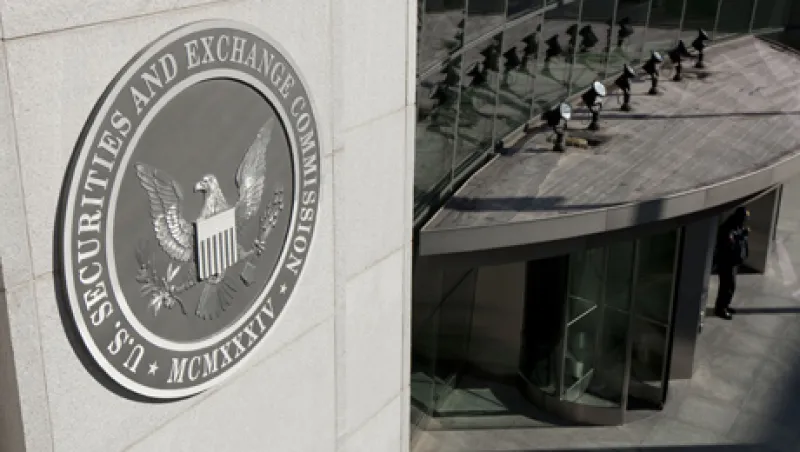Get ready for the regulatory debate to heat up regarding dark pool or nonexchange trading, a practice that currently represents a third of U.S. equity trading and is generally viewed as a benefit to institutional investors seeking to minimize the impact of large block trades, and a possible uptick in trading costs.
With three dark pools or off-exchange venues in the U.S. — Pipeline, Level ATS and Liquidnet — coming under regulatory fire of late for disclosure issues, questions and concerns continue to be raised about dark pool practices and regulatory changes are expected.
That’s the finding of a new TABB Group report entitled “A Spotlight in the Dark: An Inevitable Debate.”
“Like it or not, we believe the rules surrounding off-exchange trading in U.S. equities will change; it is only a matter of time,” says Miranda Mizen, a TABB Group analyst, author of the 18-page report and a former senior vice president of transaction services at the American Stock Exchange.
Mizen notes that regulators in Canada, Europe, Australia, Asia and Latin America have proposed or are putting into place new rules to favor market transparency and consolidation at the same time that questions are being raised about whether or not dark or off-exchange trading hinders price discovery. In such venues, trading is designed to be anonymous and prices are made public only after trading is done.
The TABB Report comes on the heels of new research conducted by professor Haoxiang Zhu at the MIT Sloan School of Management and issued in November — “Do Dark Pools Harm Price Discovery?” — that concludes that adding a dark pool alongside a traditional, “lit” exchange actually tends to improve price discovery efforts. It is just one of many academic reports on the topic that analyze the varieties of off-exchange trading, many of which draw different conclusions and add fuel to the ongoing debate.
The TABB report surveys the growth of dark execution, estimating that 30 to 33 percent of all equity trading in the U.S. now takes place off-exchange, either in independent dark pools run by firms such as Liquidnet or off-exchange venues run by broker-dealers. Currently, Barclays, Credit Suisse, Goldman Sachs and UBS all operate their own internal dark pools or off-exchange venues, accounting for an estimated 13 percent of all equity trading volume in the U.S. and 9 percent in Europe.
The report also notes that while the percentage of off-exchange volume is a sore point for lit exchanges such as the New York Stock Exchange or Nasdaq, they, in fact, do offer a variety of order types that result in nondisplayed or dark execution opportunities as well.
With this trading landscape in mind, Mizen advises that any future debate should take into consideration broader market structure issues, including the ways in which on and off exchanges work cooperatively to benefit users and meet various user needs.
“Buy-side traders with oversized orders to fill want sizable fills, natural counterparties and the ability to avoid being seen,” Mizen says. At the same time, she notes that the quality, fairness and efficiency of the public or lit markets are brought into question if they are viewed as a destination of last resort for equity traders.
While she does not purport to have an end solution to the current concerns, Mizen projects a regulatory focus on issues such as price discovery, price improvement, trade size and transparency, as part of the broader market structure debate.
This is in contrast to the the CFA Institute in the U.K. which states in a report issued in November that as larger volumes of equity-market transactions take place away from public or lit exchanges, the way to ensure market quality is by maintaining strong competition between lit and dark venues.
The CFA report suggests ways to achieve this goal. One is consistent regulatory monitoring of dark pool activity with action taken when it grows excessively, or when it accounts for over 50 percent of equity trading and voluntary reporting disclosures on the part of dark trading facilities. This, they argue, will enable investors to make more informed decisions regarding their use.
“We believe that implementation of these considerations would help protect displayed orders . . . maintain competition, and improve transparency,” said Rhodri Preece, director of Capital Markets Policy at the CFA. The CFA’s suggestions come at a time when the launch of a dark pool audit and assessment service to help clarify dark pool practices is being proposed in the U.S. by consulting firm Woodbine Associates.
However, there are three big questions, Mizen of TABB Group says, that need to be addressed to ensure that any new regulations have fairly assessed potential impacts on trading markets:
- Does the protected quote need better protection?
- Should criteria around off-exchange trading be established?
- How can regulators temper the need for dark pool trading benefits with a call for greater transparency and fairness in markets? Put another way, How should execution alternatives — dark or off-exchange vs. lit or exchange-based trading — be regulated and yet still fit together?
Mizen warns that the longer the SEC waits to establish new regulations, the more disruptive the impact will be on markets. She points out that the JOBS Act of 2012 indirectly forces open one door to change, as the SEC is set to review tick sizes of smaller companies and will need to consider any change market-wide.
In conclusion, Mizen says that “scrutiny of dark execution off-exchange must equally scrutinize dark execution on-exchange, where the complexity of order types and high frequency trading create a very difficult trading environment. Trading outside the lit order books offer legitimate value and advantage . . . To be effective, the dark debate must be part of the broader market structure debate that includes the quality and efficiency of the lit markets.”






